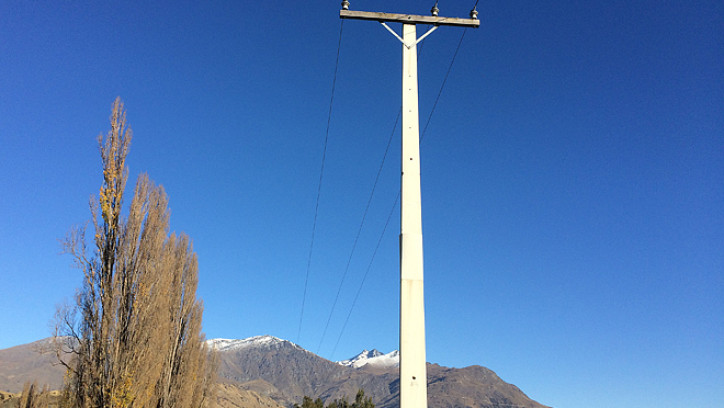Generating your own electricity
Last updated: 9 August 2023

Save on household costs by generating your own electricity.
Generating your own electricity can reduce energy costs and can in some cases ensure your supply is secure.
For rural properties, it may be the only practical and cost-effective option. For urban properties, 'micro-generation' may also be an attractive option under the right circumstances.
The most common options are solar, and traditional diesel generators.
Why generate your own electricity?
Cost-effectiveness
With solar, generating your own electricity may be cheaper in the long run than continuing to use power from the local lines, particularly for sites that get lots of sun.
For properties in remote areas, connections to the local lines can cost tens of thousands of dollars. Generating your own electricity can work out cheaper. It can also be an option in urban areas. At the moment the set-up costs are relatively high, but they are coming down.
If you are connected to the grid and you generate your own electricity, you may be able to sell any excess back to your power company.
Environmental impact
About 80 per cent of New Zealand's electricity is generated from renewable sources such as hydro, wind, bio-energy and geothermal. This means switching to solar is likely to have a lower impact on greenhouse gas emissions than in other countries.
As electricity demand increases, generating your own electricity using renewable energy can help reduce New Zealand's greenhouse gas emissions and your personal carbon footprint.
Having said that, you will probably reduce your greenhouse emissions more effectively by switching to an electric or more fuel efficient vehicle, or being more energy effecient in your home.
How can you generate your own electricity?
The most common and practical options for generating your own electricity are:
- solar
- photovoltaic (PV) systems, and
- diesel or bio-diesel generators.
Diesel generators
Diesel generators have been used for many decades for generating electricity in remote locations.
They are also used for emergency electricity generation in case of power cuts. Hospitals, computer sites and other essential buildings all have them.
With a renewable energy system (especially wind or solar) you may still want a generator as a back-up. It may start automatically if the battery charge gets too low, for example on a windless or cloudy day.
They are simple to use and can be maintained by any garage mechanic. But they have drawbacks: noise, fuel costs, inconvenience of refuelling, exhaust fumes, wear and maintenance costs.
When used regularly, diesel generators release significant amounts of greenhouse gas emissions which contribute to climate change.
Storing and using the electricity
If you're generating your own solar electricity, you can either be connected to the grid (and feed surplus electricity back into it) or be independent (a stand-alone power system). If you have a stand-alone system, you will need to either:
- have batteries to store the energy as it is generated
- have an additional generating option available to ensure an uninterrupted supply.
If you are grid connected, you will be connected to the local electricity network, and can export excess electricity, as well as using mains electricity as a back-up for your system. Using the grid for storage will mean that you can save on the cost of having local storage battery banks.
Batteries
If you are using batteries, you'll need enough capacity to store electricity for your needs. This may need to be the equivalent of several days' supply if you rely on intermittent solar photovoltaics generation.
Your batteries will also need to be able to store electricity to meet your peak demand when several appliances are switched on at the same time.
They will need to be properly installed and maintained to keep them safe and in good condition. Check with your supplier and follow the manufacturer's instructions. They may need replacing every 6-8 years.
A bank of batteries sufficient for a stand-alone system for one home may cost anywhere from $10,000 to $30,000, depending on how much energy you need to store.
Other equipment
If you have your own power generation system and store power in batteries, you will need other equipment such as:
- an inverter, to convert direct current (DC) stored by the battery to 230V alternating current (AC) used in standard appliances
- a rectifier, to convert AC to DC before battery storage
- a controller, to make sure the output is 230V and 50Hz and the battery doesn't overcharge (it sends the excess power to a resistance element which can get very hot)
- cables, which should be thick enough to carry the highest current. The shorter they are, the less power you'll lose along the way. If they must be long, the voltage must be increased – which means you'll need more equipment to change the voltage levels.
Note that a licensed electrician is usually required to work on these systems.
Selling to the grid
Your power retailer will sell you power at one price and may buy power from you at another price. You'll need a contract with the retailer.
Different suppliers allow different options, so check before you install a system. If you're connected to the grid, you'll have to pay monthly supply charges.
You will also need a control system that prevents power being sent to the grid when the grid is down to ensure the safety of anyone working on the lines.
Energy efficiency
Home electricity generation is expensive so you don't want to buy a bigger system than you need.
In off-grid situations, before installing any type of home generating equipment, make sure you reduce your electricity use with insulation, energy-efficient LED light bulbs, gas cooking, wood fuel space heating, solar water heating etc.